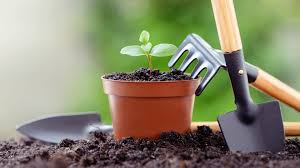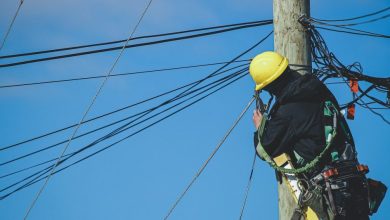Essential Indoor Garden Tools for a Thriving Indoor Garden

Introduction
Indoor gardening has become increasingly popular as people seek to bring a touch of nature into their homes. Whether you have indoor garden tools a spacious apartment or a cozy corner, growing plants indoors can enhance your living space, improve air quality, and provide a sense of tranquility. To ensure your indoor garden flourishes,having the right tools is essential. This article explores the must-have indoor garden tools that every indoor gardener should consider.
1. Containers and Pots
Choosing the right containers and pots is the first step to successful indoor gardening. These vessels not only hold your plants but also influence their growth and health. There are various types of pots available, each with its benefits:
- Clay Pots: These are porous and allow air and moisture to pass through, promoting healthy root growth. However, they can dry out quickly, so frequent watering might be necessary.
- Plastic Pots: Lightweight and affordable, plastic pots retain moisture well, making them ideal for plants that require consistent watering.
- Self-Watering Pots: These pots have a built-in reservoir that provides a steady supply of water, reducing the risk of over- or under-watering.
2. Potting Soil and Growing Mediums
The quality of the soil or growing medium you use significantly affects your plants’ health. Indoor plants generally thrive in potting soil, which is lightweight and well-draining. There are also specialized growing mediums like:
- Coco Coir: Made from coconut husks, this medium retains moisture well and provides good aeration.
- Perlite and Vermiculite: These additives improve soil aeration and drainage, preventing root rot.
- Peat Moss: Often used in seed starting, peat moss retains moisture and nutrients, promoting healthy seedling growth.
3. Watering Cans and Sprayers
Proper watering is crucial for indoor plants, and having the right tools can make this task easier:
- Watering Cans: Choose a can with a long spout to reach deep into pots without spilling. Some cans have adjustable nozzles to control the water flow.
- Misting Bottles: Many indoor plants, like ferns and orchids, thrive in high humidity. Misting bottles help increase humidity levels and keep leaves clean and healthy.
4. Pruning Tools
Pruning is essential for maintaining plant health and encouraging new growth. Essential pruning tools include:
- Pruning Shears: Sharp shears are ideal for cutting thick stems and branches. Look for stainless steel blades to prevent rust.
- Scissors: Fine-tip scissors are perfect for trimming delicate plants and deadheading flowers.
- Pruning Saws: For larger indoor trees and shrubs, a pruning saw may be necessary to cut through thicker branches.
5. Lighting Solutions
Indoor plants often require supplemental lighting to thrive, especially in spaces with limited natural light. Options include:
- LED Grow Lights: Energy-efficient and long-lasting, LED grow lights provide the full spectrum of light that plants need for photosynthesis.
- Fluorescent Lights: These are affordable and available in different spectrums. They are suitable for seedlings and low-light plants.
- Incandescent Lights: Though not as efficient as LED or fluorescent lights, incandescent lights can be used for plants that require less light.
6. Humidity and Temperature Control
Maintaining the right humidity and temperature is vital for indoor plant health:
- Humidifiers: These devices add moisture to the air, which is especially important during dry winter months.
- Hygrometers: These tools measure humidity levels, helping you adjust conditions as needed.
- Thermometers: Monitoring temperature ensures your plants are in a suitable environment. Some plants may require specific temperature ranges to thrive.
7. Fertilizers and Nutrients
Indoor plants need a steady supply of nutrients to grow healthy and strong. Essential fertilizers and nutrients include:
- Liquid Fertilizers: Easy to apply and quickly absorbed, liquid fertilizers provide a balanced mix of nutrients.
- Slow-Release Fertilizers: These provide a steady release of nutrients over time, reducing the need for frequent fertilization.
- Organic Fertilizers: Made from natural sources, organic fertilizers improve soil health and provide long-lasting nutrients.
8. Plant Support Tools
As your indoor plants grow, they may require additional support to stay upright and healthy:
- Stakes and Trellises: These provide support for climbing plants and help them grow vertically.
- Plant Ties and Clips: Use these to secure plants to stakes and trellises without damaging stems.
9. Gardening Gloves and Tools
Protecting your hands and using the right tools can make indoor gardening more enjoyable:
- Gardening Gloves: Choose gloves that are comfortable and provide a good grip. They protect your hands from dirt and potential injuries.
- Hand Trowels and Transplanters: These tools are essential for planting, repotting, and transplanting indoor plants.
Conclusion
Indoor gardening is a rewarding hobby that brings the beauty and benefits of nature into your home. By equipping yourself with the right tools, you can create a thriving indoor garden that enhances your living space and well-being. From choosing the right containers and potting soil to providing proper lighting and humidity control, each tool plays a crucial role in the success of your indoor garden. Embrace the joy of indoor gardening with these essential tools, and watch your plants flourish year-round.




